CHICAGO– A truly scary movie doesn’t release you from its grip when the end credits begin to roll. It doesn’t evaporate from your mind like a pleasurable yet disposable piece of escapist entertainment. It burrows itself within your subconscious and follows you like a malevolent shadow until night falls.
Waiting to pounce, the horrors of your imagination hover at your bedside. Every sound, every movement and every gust of wind whistling against your window becomes intensified. Above all, the two things that continue to keep you awake are your rapidly beating heart and the fear of what nightmares await you as your mind fades to black.
This is the effect a supremely frightening film can have on the mind and soul. Of course, everyone has their own distinctive idea of what constitutes as cinematically scary. Some moviegoers are giddily susceptible to the knee-jerk jolts often consisting merely of a loud noise on the soundtrack, and the sudden entry of an alarming presence. Other viewers, such as myself, are more prone to being unnerved by psychological terrors lurking just beyond the frame, which are oftentimes more chilling than anything that could be adequately visualized. Consider the horrified expression on Mia Farrow’s face as she glances at her new bundle of demonic joy in “Rosemary’s Baby,” or the sound of Michael Myers’ rhythmic breathing echoing through the sleepy suburb inhabited by his victims in the final moments of “Halloween.” These moments are far scarier than any copious quantity of blood and guts. To get you in the mood for All Hallows’ Eve, here are the top ten scariest movie moments guaranteed to haunt your dreams…
10. “Paranormal Activity”
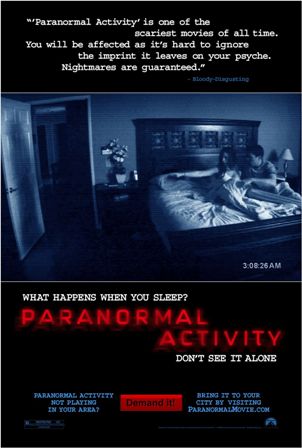
Paranormal Activity
Photo credit: Paramount
This micro-budget thriller could’ve easily been just another picture boosted by Internet buzz before vanishing into obscurity. Yet there’s a very good reason why this $11,000 picture grossed nearly $200 million worldwide. First-time filmmaker Peli proved a master at exploiting the most fundamental fears of audiences, particularly young couples just starting to live together. The film centers on one such couple, Katie (Katie Featherston) and Micah (Micah Sloat), who place a camera at the foot of their bed to record the supernatural events they suspect to be occurring during their slumber. The footage inspires many questions familiar to couples adjusting to a new house: “What’s making that noise downstairs? What’s that shadow on the floor?” Yet the most unsettling mystery of all is, “What’s going on in the head of the person sleeping next to me in bed?” The scariest image in the film is that of Katie crawling out of bed in the middle of the night, and standing completely still, while looking down at her sleeping lover for hours, as the time code in the camera speeds up, mirroring the viewer’s rapid pulse.
9. “Snow White and the Seven Dwarfs”
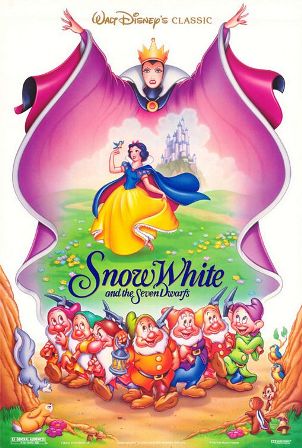
Snow White and the Seven Dwarfs
Photo credit: Disney
Sometimes we encounter the most memorable scary movie moments of our lives when we are still children. The greatest fairy tales are unafraid of exploring darkness, and “Snow White” is certainly no exception. Walt Disney’s first feature-length animated masterpiece includes several inventively spooky sequences that strikingly contrast with its lighter elements. White’s squeaky-voiced naiveté is so maddening that one almost delights in her torturous trip through the haunted woods, as fearsomely jagged trees threaten to tear her to shreds. Yet the most unforgettable moments in the film involve the Wicked Queen, brilliantly played by the unjustly forgotten stage actress Lucille La Verne. The scene in which she transforms herself from an icy beauty to a hideous old crone is a tour de force of terror. La Verne’s seductively cruel voice morphs into a startling cackle, as the camera swirls around her. After downing of brew of mummy dust and thunderbolts, the Queen reveals her shocking new face with ghoulish delight. It caused my mother, at an early age, to accidentally eat one of her own crayons. If that’s not a good review, I don’t know what is.
8. “Jaws”

Jaws
Photo credit: Universal
The king of commercial shockers, Spielberg’s timeless entertainment literally scared audiences out of the water back in ’75, but it wasn’t just because of its malevolent shark. There’s one scare in the film that was so enticing for its young director, that he self-financed a reshoot just so he’d be able to put it in the picture. The scene takes place underwater, as scruffy ichthyologist Matt Hooper (Richard Dreyfuss) investigates the remains of a sunken fishing boat. Seemingly out of nowhere, the disembodied head of Ben Gardner, the ship’s late fisherman, emerges from the depths of the boat’s hull, with only one eye intact. Of course, this sequence could easily be viewed as a mere cheap shock tactic. But the editing by Verna Fields, who volunteered her own swimming pool for the scene’s location, allows viewers to discover the gory sight at the same instant as Hooper, thus sharing in his abrupt terror. The resulting moment delivers a jolt that, when viewed in a theater, reverberates throughout the entire audience, eliciting screams followed by breathless laughter. “Jaws” proves that scary moments can also be a lot of fun.
7. “Carrie”

Carrie
Photo credit: UA
Just one year after Spielberg’s crowd-pleaser, De Palma released this jet black satire about a troubled young woman’s high school hell. Yes, the film is hokey and dated at times, but it still delivers the goods, leading up to a final scene that is perhaps the greatest “jump-out-of-your-seat” moment in cinema history. The film is essentially one long build-up to that moment. As Carrie (Sissy Spacek), suffers humiliations both at home and in the classroom, the audience shares in her agony. Yet viewers are also able to identify with one of Carrie’s peers, Sue (Amy Irving), who develops compassion for the girl she once taunted and makes a valiant effort to right her wrongs. With the help of her boyfriend, Tommy (William Katt), Sue coordinates a dream night for Carrie at the prom, which derails in spectacular passion. Carrie’s telekinetic powers fatally combine with her irrational anger, as she turns a glittery gymnasium into a raging inferno. Though this is the film’s primary set-piece, it is more disturbing than “lose-your-sleep” scary. Yet it proves to only be a prelude for the last sequence, in which Sue makes one final attempt at reconciliation. Mario Tosi’s hypnotic music poignantly conveys Sue’s guilt, which has dragged her down into the depths of the despair. What happens next is stunningly scary, even for viewers who can see it coming (De Palms admits he borrowed the moment from “Deliverance,” but he ended up improving it tenfold).
6. “Diabolique”
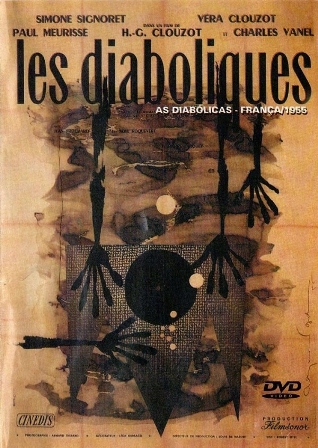
Diabolique
Photo credit: Cinedis
Hitchcock fans take note: “Diabolique” is the greatest suspense film never made by the Master of Suspense, despite the fact that Hitch attempted to secure the rights to its source material. Unfortunately for him, the great French filmmaker Clouzot had already acquired the rights to Pierre Boileau and Thomas Narcejac’s book, “Celle qui n’était plus,” Though he only made a fraction as many films as Hitch, Clouzot is justifiably renowned as the “French Hitchcock,” a reputation forever cemented by this excruciatingly tense masterwork. The plot certainly would’ve made Hitch salivate: Christina (Véra Clouzot, the director’s wife) decides to off her detestable and dangerous husband, Michel (Paul Meurisse), with the help of his mistress, Nicole (Simone Signoret). After drowning him in a bathtub, the two women dispose of the body while avoiding to stoke the suspicions of onlookers. Yet after the body disappears from what was meant to be its final resting place, Christina begins to fear that her husband is still among the living, or perhaps is tormenting her from the beyond the grave. Like “Carrie,” “Diabolique” builds its suspense gradually until it practically becomes unbearable (believe me, it hurts so good). The film’s phenomenally chilling climax takes place in absolute silence, as Christina becomes overwhelmed with shock. Like the rest of the picture, this moment is as fresh and deliriously frightening as the day it was made.
5. “Psycho”

Psycho
Photo credit: Universal
“Psycho” was originally conceived as Hitchcock’s attempt to equal the pure horror of “Diabolique.” To say he succeeded would be a massive understatement. “Psycho” is not only the most famous horror film of all time, but one of the most subversive. It’s also one of the first films to consciously inspire viewers to shout at characters on the screen, offering them some much needed advice, such as, “Don’t go in that fruit cellar!” In his typically witty theatrical trailer, Hitch took moviegoers on a tour of the set, highlighting particular locations where bloody events would take place (including the notorious tub). Thus, when each location would appear in the film, audiences who saw the trailer would already be anticipating the scare. And after the brutally jarring shower scene proved that literally no one was safe (not even the alleged main character), viewers instantly became frightened for anyone daring to approach the Bates Motel, home of the homicidal old recluse, Mother Bates. Films such as Ridley Scott’s “Alien” owe a debt to Robert Bloch’s cleverly structured script, which succeeds in effortlessly manipulating audience expectations. No moment can truly top the infamous shower scene, which reportedly inspired its victim, Janet Leigh, to prefer baths for the rest of her life. Yet for me, the scariest moment is the one in which Detective Arbogast (Martin Balsam) makes the ill-advised decision to investigate the Bates residence. It’s preceded by a brilliantly acted and written scene between Arbogast and Norman Bates (Anthony Perkins), and set the gold standard for films intending to milk the exquisite horror of morbid anticipation.
4. “Ringu”
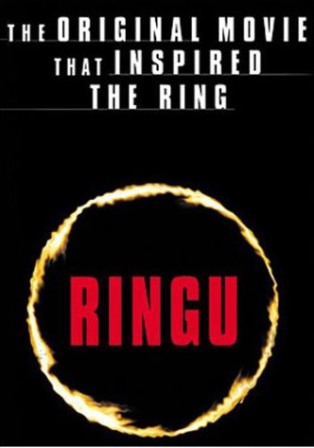
Ringu
Photo credit: Sony
There’s an entire subgenre of Asian horror flicks that could be accurately encapsulated by this summary: “Disgruntled dead lady in a white robe goes on a killing rampage, fatally shocking people by flashing her angry grimace, residing beneath layers of silky black hair.” The premise sounds ludicrous on paper, yet it has provided the fodder for endless thrillers, many of which have been followed by wildly inferior American remakes. The best and most effective example of these pictures is Nakata’s original “Ringu,” which was remade with partial success by Gore Verbinski in 2002. While the Americanized “Ring” was sporadically chilling at best, “Ringu” is riveting the entire way through, partly because of its quietly brooding tone. A more overblown approach would’ve instantly warranted the material laughable. The plot concerns a mysterious videotape containing ominous clues to the unsolved murder of a young girl. Any viewer unable to piece together the mystery winds up dead in seven days. But how exactly do these victims perish? The answer is eventually revealed in a sequence that is as close to heart-stopping as anything captured on film. Nakata’s restraint (which was entirely lacking in “The Ring 2”) is key to this sequence, which views the supernatural events with matter-of-fact stillness. Verbinski fumbled the ball in his version by creating a digital apparition. The horror was diminished because of its obvious artificiality. In Nakata’s version, we’re treated to a real actress with real hair crawling out of a real television set and glaring at her victim, with an eyeball that has the power to inspire nightmares for far more than seven days.
3. “The Shining”
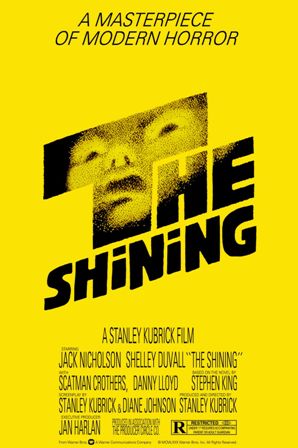
The Shining
Photo credit: WB
Speaking of stillness, there are few films scarier in their slow-burn suspense than Kubrick’s one-of-a-kind masterpiece. The director already proved he could blend sound and image in ways both unsettling and unforgettable. Who can forget the hallucinogenic trip through the monolith scored by György Ligeti in “2001,” or the rape scene choreographed to “Singin’ in the Rain” that doubled the notoriety of “A Clockwork Orange”? Here, Kubrick utilized the work of five composers, including the great Krzysztof Penderecki, to achieve his desired atmosphere. The music forges an arresting duet with John Alcott’s mesmerizing Steadicam cinematography, resulting in sequences so bone-chilling that viewers may find themselves holding their collective breath, afraid to move. Though the film’s scary moments are numerous, the sequence that puts them all into motion occurs early on, as little Danny (Danny Lloyd), has his first telepathic visions of the horrors to come. It begins with Danny staring into his bathroom mirror, as he converses with the voice in his head, warning him of his impending doom. With nothing but a foreboding score on the soundtrack, the film cuts to an image of terrifying abstractness: an elevator opens in a bland hotel lobby, unleashing an ocean of blood that floods the entire space. This shot is intercut with two flash frames: one of sinisterly smirking sisters in matching outfits, and one of Danny, his face frozen in horror. After that sequence, Kubrick has you tight in his grip forever and ever and ever…
2. “The Blair Witch Project”
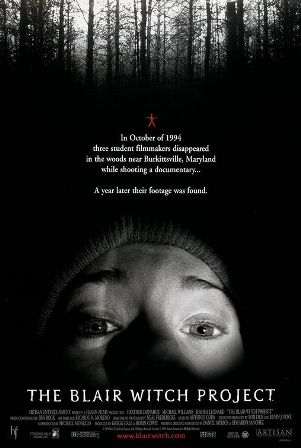
The Blair Witch Project
Photo credit: Artisan
Nearly a decade before “Paranormal Activity,” two young filmmakers attempted to make a horror film that abandoned many of the genre’s formulaic tropes, and went straight for the jugular, in terms of psychological terror. The resulting picture is utterly spellbinding. Viewers approaching it with a cynical mindset will leave empty-handed, but those brave enough to lose themselves within its deftly convincing “reality” are in for a series of sleepless nights. Part of the film’s success must be attributed to the completely convincing work from its three lead actors: Heather Donahue, Joshua Leonard, and Michael C. Williams. They play aspiring filmmakers aiming to assemble a documentary on the mythological Blair Witch. Like “Activity,” the story is viewed entirely within the found footage of the characters, as they descend deeper and deeper into the woods, supposedly haunted by the unseen witch. While “Activity” was at least confined within the comfort of a bedroom, this film’s outdoor location forces the viewer to feel far more vulnerable. I distinctly remember viewing the film upon its initial release, and being entirely horrified. The climactic sequence is monumentally scary in all sorts of ways, with a final shot that packs a powerful wallop. Yet the moment that spawns the most resonant nightmares, particularly among campers, is the one in which the three sleeping friends awaken in the middle of the night to hear the sound of children’s voices outside their tent. This effect was achieved in the simplest of ways: the filmmakers crept toward the tent armed with boom boxes playing the voices, and proceeded to violently shake the tent, terrifying their unsuspecting actors. Even with all that in mind, the scene is still jaw-dropping in its effectiveness, particularly because of the authentic reaction elicited from the actors.
1. “The Vanishing”

The Vanishing
Photo credit: Fox Lorber
The scariest movie moment on this list is also the most straightfoward. It emerges entirely out of the logic of a coldly calculating plot, and yet still manages to shake viewers to their very core. It also encompasses the fears of all the previous moments on this list, epitomizing humanity’s fear of mortality in one astoundingly effective scene late in the film. Dutch director Sluizer inexplicably remade his thriller for American audiences in 1993, undermining its horror with cheap slasher films clichés. Movie lovers are well advised to seek out the original picture in its pristine Criterion edition. “The Vanishing” (a.k.a. “Spoorloos”) begins with the sudden disappearance of a young woman (Johanna ter Steege) at a rest stop. After an initial bout of disbelief, her boyfriend, Rex (Gene Bervoets), embarks on a three-year journey to discover what happened to his lost love. His fervent obsession becomes our own, as we become complicit in Rex’s tireless pursuit of the truth, regardless of the cost. He eventually encounters a benign chemistry teacher, Raymond (Bernard-Pierre Donnadieu), who may be responsible for his lover’s disappearance. Their scenes together are profoundly ominous, as Raymond leads the bewildered Rex down the path of no return. Several recent films have attempted to surpass this film’s immortal climax, but none have come close. It unforgettably illustrates the passivity of evil, the inevitability of horror and the universality of death, all in one agonizing take. Sweet dreams.
 | By MATTFAGERHOLM |



















